Toyama-specific Disasters
Yorimawari-nami:
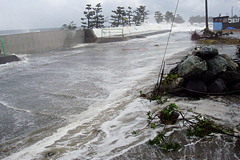 Yorimawari-nami in February 2008 (Nyuzen Town)
Yorimawari-nami in February 2008 (Nyuzen Town)High waves called yorimawari-nami are unique to Toyama Prefecture, and have repeatedly caused significant damage in and around Toyama Bay. It is necessary to be careful, as they can strike suddenly after the wind has calmed down. Evacuate immediately if an evacuation advisory is issued.
Formation and Points to Remember
Primarily in the winter, when low pressure builds while remaining stagnant over the eastern sea of northern Japan, high waves by western Hokkaido swell and move south over the Sea of Japan, arriving in Toyama Bay. The water level in Toyama Bay suddenly becomes lower, and high waves push against the coast.
2008 Yorimawari-nami Affected Areas (Damaged facilities)
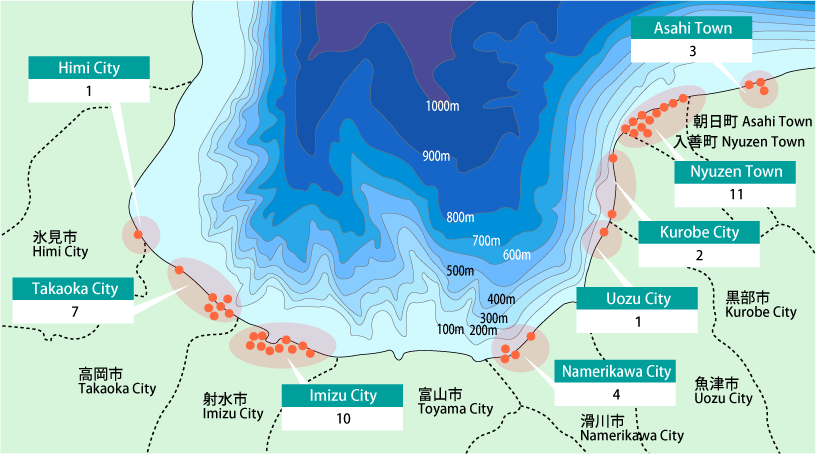
Heavy Snow:
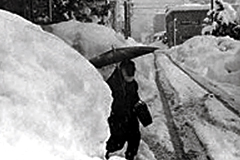 1981 Snowstorm
1981 SnowstormSnow levels reached 160cm (5 ft.) in Toyama City and 430cm (14 ft.) in Toga in Nanto City.
When the winter system of high pressure to the west and low pressure to the east is strong, it is necessary to be vigilant. In addition, be very careful of accidents during snow removal work.
What to Remember When Removing Snow
- Conduct snow removal after taking necessary precautions against falls, and work together with your neighborhood.
- Only dispose snow into roadside gutters in small amounts at a time, starting from downstream, in order to not cause flooding.
- When removing snow from the roof, always wear a safety rope and non-slip shoes. Let your family and friends know, and avoid working alone. Be especially careful on warm days or after rainfall, as the roof will be slippery.
- Always turn off the engine before removing snow stuck in snow removal machines.
Fire Caused by Foehn Wind:
Toyama Prefecture primarily experiences foehn wind in spring and autumn. While Toyama Prefecture has the lowest incidence of fire outbreaks in the country, we still need to remember the great fires of the past and exercise caution.
Mechanism of Foehn Wind
Moist air becomes dry air when it rises over mountains, and blows down the mountain. Foehn wind causes the temperature to rise and the air to become dry, which in turn increases the likelihood of wildfires, avalanches, and floods caused by melting snow.
Foehn Wind Diagram
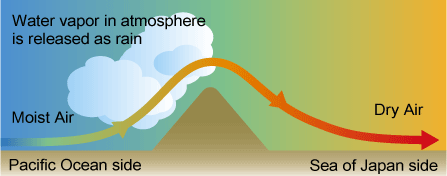
★Home Fire Detectors
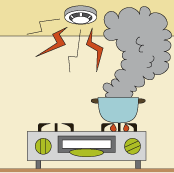
★Coastal Surveillance Cameras
Toyama Prefecture and the Ministry of Land, Infrastructure, Transport and Tourism (MLIT) has set up coastal surveillance cameras to be aware of coastal conditions.●Toyama Prefecture River/Coast Live Video Feed
http://kawa.pref.toyama.jp/camera
●Disaster Prevention System, Kurobe River Office (MLIT)
http://www.hrr.mlit.go.jp/kurobe/bousai/